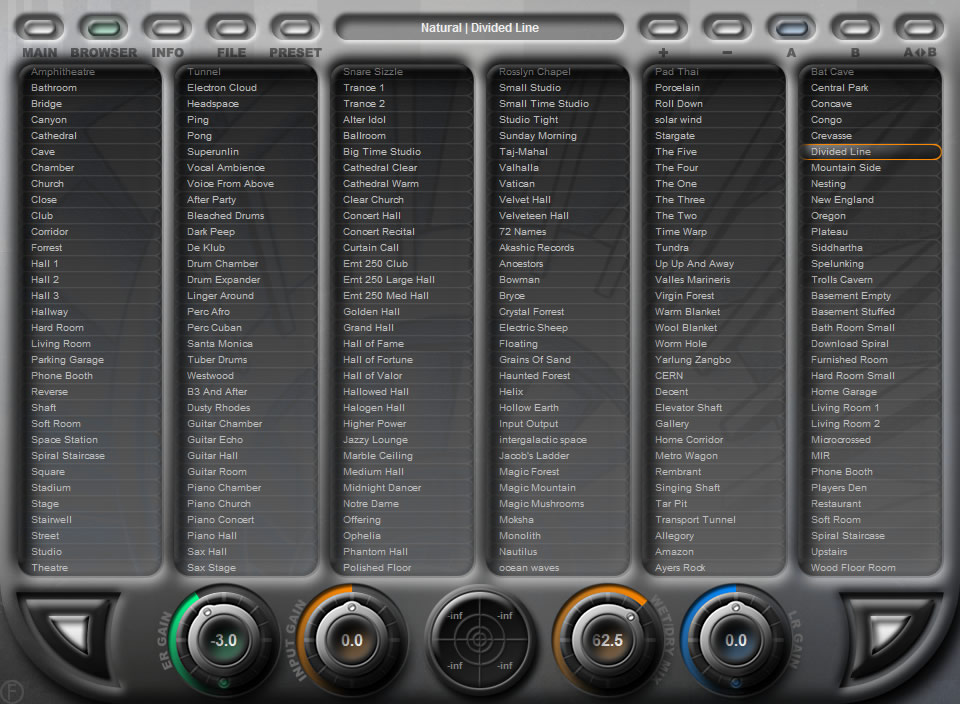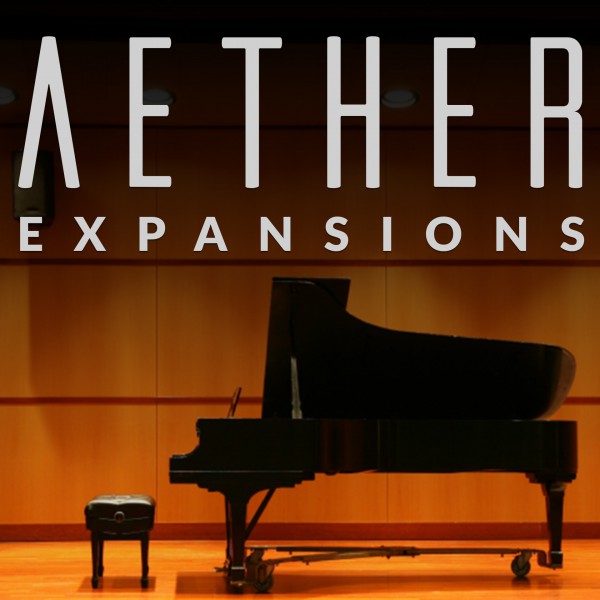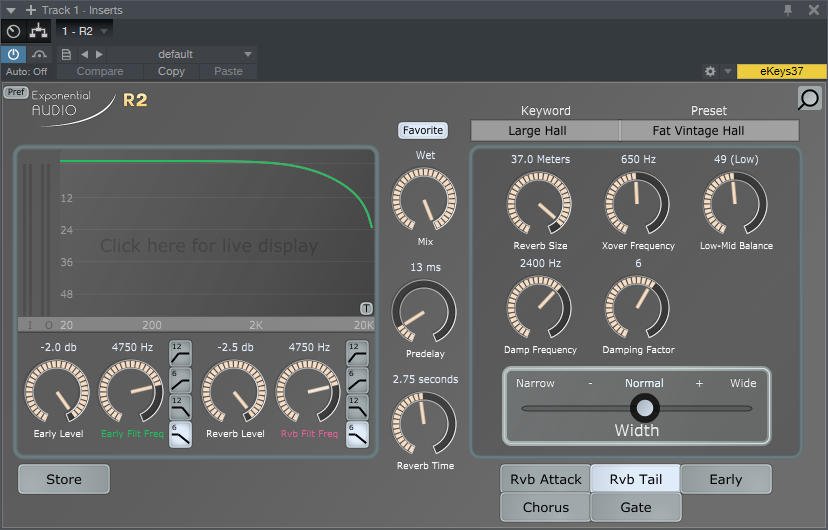2CAudio’s new effect, B2, has a strange name and an unusual purpose. But don’t let that scare you off. There’s real magic to be had with this unusual dual-reverb plug-in.
2CAudio announces the Perfect Storm Bundle 2.0. The bundle includes B2, Breeze, Aether, and all Aether Preset Expansions for a package price of $499.95. This is a savings of approximately $200 or roughly 30% as compared to purchasing all items separately. Existing Perfect Storm bundle customers can upgrade for $149.95. Aether is an award-winning, ultimate quality, self-modulating algorithmic reverb. It is used daily in the worlds largest music, film, television, and game productions and is heard daily by millions of listeners around the world.
by Rob Mitchell, Nov. 2013
2CAudio is the maker of the high quality products, Aether and Breeze. B2 1.2 is their latest product, and functions as a spatial processor/reverb. It boasts twin algorithmic reverb engines, a modular design, and has nearly 700 presets ready to add new dimensions to your audio.


On top of the many presets, you get many extras thrown in, including over 300 engine templates from their previous release; Breeze, and more than 90 dynamics presets. They have also included some very useful features, some of which are the many EQ filters, Attitude types, and damping settings. I will get to more detail on those later in the review.
For the PC, there are 32 and 64-bit AAX and VST versions available. Older versions for RTAS and XP are available, but not supported. For the Mac, there are 32 and 64-bit AAX, VST and Audio Units versions. Installation on my PC was easy, and uses a serial number for authorization.
2CAudio develops software, Galbanum develops content, and Designer Sound markets, sells, and distributes these products as efficiently as possible so that the technical development team at 2CAudio is free to obsessively focus on RnD and product design in effort to create some of the best products in our industry. The Aether Creativity Expansion is a collection of 150 new professionally designed presets for Aether. It is designed to further Aether's lead in the FX-reverb category by utilizing Aether's features to achieve cutting edge spatial effects and environments. JoeW1 's review. Aether from 2CAudio is compatible with different working platforms like Xp, Vista, 7 or MAC. The manual that is included with the software is quite detailed, enough to obtain the necessary information of how the reverb works. The setup doesn't require a lot of time or effort, it's very fast and easy to.
On Display
After loading it up, B2 has three different pages to view it’s many controls. I won’t go over all the displays/controls in total detail, but will try to touch on the more important ones.
2c Audio Aether
There’s the main screen when it first loads, the browser, and an info page. When the main screen is up, on the left side you can see various controls for switching between different views. There are also controls to view one engine or the other (A/B), and power buttons to turn either one on or off. You can switch from these three displays (time, frequency, and attitude/dynamics) to the Taps view.
In the Time Display, you can see information on the early and late reflections, A and B engines, and the Cascade amount. I’ll explain more on what Cascade is about later on.
With the Frequency display, you can see changes over the range of frequencies made with the Damp and EQ controls. The amplitude amount is on the left, and the frequency is shown along the bottom of the display.
The Attitude display basically shows how much distortion is applied to the signal. It’s bipolar, and the X-axis is input, and the Y-axis is output. Anything veering off the 45 degree background gridline would be distortion of some type. It shows this for both the A engine (blue line) and the B engine (green line).
The Taps display lets you see separate delays over time from left to right. Depending on its color and height, the readout will give you feedback on what’s going on with the stereo width (color) and amplitude (height). On top of that, it also shows the A and B engine (if both are being used) plus the Cascade signal.
There are also several controls seen in some other reverbs in one form or another. These include Predelay, Size, and Range. Others, such as the Density, Diffuse, and Random controls can really help with getting more of a living/breathing type of non-linear sound.
You can have B2 configured with each independent reverb set with their own reverb types, such as Early reflections for one, and a large hall setting on the other. On the main screen, there are many controls and displays at your disposal. It’s all logically laid out. One control that you will probably be using quite often is the Solo/Dual Display View switch. It changes the displays to show both engines, the cascaded signal, or just the selected engine by itself. You can fine tune one engine’s settings, and then switch to the other to adjust it as well.
Using the Browser, you will find the different categories listed on the left. There are many to choose from, including Four Channel, Dynamic Space, Chambers, Churches, Halls, plus many FX categories. You just click on one of them, and it then displays all the presets within it.

When editing/creating a preset, one handy feature is the Active State control. It lets you switch back and forth between the edited version of your new preset, and the original sound it initially had. The manual suggests two other ways this can be useful: you can compare similar presets against each other, and you can use this feature as type of blind listening test. This can be helpful when you’re not sure which of two presets you prefer.
2caudio Aether Download
The Copy State lets you copy the setting either from A to B, or B to A. With all the main controls in the GUI, you can double-click on the number readouts, and manually enter the amount if you’d like.

The Engine Presets are useful settings that you can load without changing Dynamics and Global controls. They are good starting points that you can use right away, or tweak a bit to your liking. You can load one preset in the first engine, and load a different one in the other engine. Then experiment away till you get it just how you like. You can also load Breeze presets into each engine.
The Info page is for adjusting such functions as Knob Motion (Linear, Circular, or Follow Host), Global Gain, Limiter Ceiling, and Oversampling amount. You can also find the version number here, which is handy when making sure you’re all up to date.
One really nice feature for users who happen to own a large HD monitor is the new HD display setting. This lets you view the display in the huge 1920 by 960 resolution. I couldn’t really check this feature out, as my monitor maxes out at 1600 by 900.
EQ, Modulation, and Attitude Controls
As I mentioned before, there are many different EQ filter settings included. The menu below its control knob lets you pick from the wide range of types available. The same goes for the Damping control, with over 30 types in the dropdown menu. The frequency display lets you easily see how audio spectrum is affected by both of the controls.
You can also get some pleasing results with the Modulation controls. For the Depth control, you can dial in the amount, and below that knob, you can set it to a low, medium, or a high setting. It basically goes from a small number of the delays being modulated (with the low setting), to all of them being modulated (with the high setting). Medium falls somewhere in between. The Modulation mode (below the Rate control) has either Natural or FX settings. Natural works well for “regular” types of sound, something like you might hear in the real world. The FX setting has more of a dramatic effect on the audio, and in fact, it’s possible to even get a chorus sound from it.
The Attitude control is mainly a type of distortion control, and can give your sound a new audio personality. I tried “Shred” and cranked up the control for it, achieving a satisfying distortion there. I found the best way to really tell what was going with each setting was to just go through them one at a time, and listen to the changes the chosen setting makes overall. The descriptions in the dropdown menu for it don’t always tell the whole story here. Names like 2, 3, and 4 left me wondering … but others are more descriptive: Tube1, Sat1, and Bits, for example. Whichever one I did select, they all were of very high-quality, not just some basic stomp-box, cookie-cutter sound.
The EQ section is great to tweak after you get an Attitude setting that you like. It lets you wrest even more out of that same attitude section, giving you huge amount of possible sound combinations.
Mix Global Sliders
In this section, there are some of the basic controls for balancing/mixing the engines.
I’ll jump straight to the Cascade control, which lets you control how the two engines work together. Setting it to the lowest amount, it runs them in a parallel mode, while at the maximum amount it runs in series. Anywhere in between those extremes has a bit of both parallel and series, depending how far the control is moved. Using this, you can get some great blends/combinations between the two engines.
Other settings included in this section are a bit more basic and straight-forward. These include the Balance (between the two engines), Mix, and Gain.
One feature I really liked is the Lock next to the Mix level control. Even though the Mix Levels are set at a certain amount (depending on which preset is being used), some users may want to use B2 in a send bus configuration in their DAW. With the lock feature, you set the wet/dry mix the way you want and lock that down. It stays there as you continue browsing through the presets. You could set this to 100% wet in a bus send scenario, and lock it that way. As audition B2’s presets, it stays at the fully wet setting..
Final Thoughts
The sound of B2 is just awesome; there aren’t too many other ways to describe it. With so many combinations between the two different high quality reverbs, EQ filters, modulations, and attitude settings; you really can’t go wrong.
At times, the CPU usage could get pretty high, especially when using both engines, and having it set to the very intensive 4X oversampling. You can get very good results even when set to1X or 2X, but if your PC or Mac has a lot of horsepower, you can try out the higher settings of course.
If you’re going to try and use multiple instances of B2, you might have to set some of those to one engine, which can still sound great anyway. If you’re only going to use one instance, for example, and it’s to be used on the master bus, you can make full use of the higher quality settings, modulation, and/or dual engines.
With 2CAudio’s latest version 1.2, people with higher-end CPUs should see a benefit from an increased efficiency in the new code. They say it can boost the efficiency (on those better CPUs) up to 20% over the previous version. I don’t have one of the latest PCs available. Actually, it’s around three or four years old, so that may be why I experienced some higher CPU readings.
The manual is very detailed, except for a couple of parts. In the Attitude control section for instance, it lists all the names for the types of presets it has, but they are all listed this way: “Sat I xxxxxxxxxxxx“. No descriptions. That’s one area of B2 where I had to just flip through the settings to figure out what it was doing to the sound. B2 is up to version 1.2, but up at the top of the manual it has the text “Preliminary version 9/20/2012”. As of the date of writing this review (10/29/13) maybe we can suggest that it’s time for a small update to the manual? But other than these minor complaints, it is an excellent manual.
At $249, is it worth the price? With its twin reverbs, modular design, excellent presets, and ample EQ filtering/modulation/attitude options available, I would say it’s definitely worth it. 2CAudio also has another price option with four expansion preset packs included for $299, which would give you over 800 additional presets. For me personally, it’s the best reverb/spatial processor I have ever heard.
More information: http://www.2caudio.com/
B2 audio example clips (all first naked, then with B2):
Battery 3 Cellos impOSCar2 OP-X Pro Piano